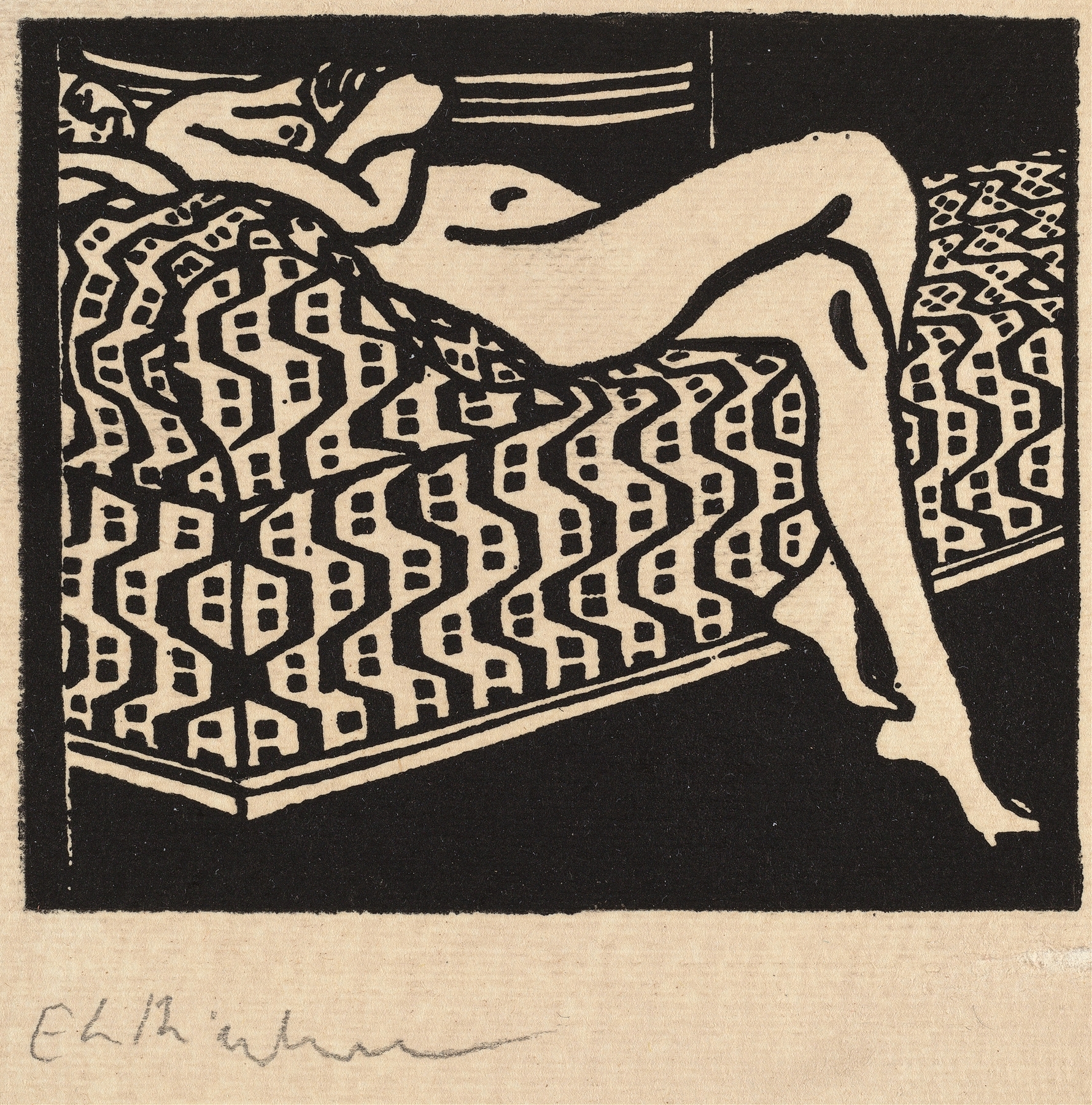Ernst Ludwig Kirchner was an artist of his epoch. In 1905, this painter, printmaker, and sculptor founded Die Brücke, which was an artists' group that had a major impact on the evolution of modern art in the 20th century and the creation of Expressionism.
During his early years, Kirchner concentrated on nudes in the studio, urban nightlife, and portraits. From 1910 he was increasingly influenced by African, Indian, and Oceanic art. He moved to Berlin in 1911, with other Brücke artists, but the group dissolved in 1913; from 1913 to 1915 he created dramatic Berlin Street Scenes paintings, marking a career high point. In 1915 he enlisted as an "unwilling volunteer" and became a driver for an artillery regiment. He suffered a mental and physical breakdown and was discharged as unfit for military service. Convalescing in various sanatoriums, Kirchner then settled in the mountains of Switzerland, where the landscape and villagers became favored subject. In 1937, the Nazis removed 639 paintings from public collections and labeled his art as degenerate. The following year, he took his own life by gunshot.
Kirchner was passionately engaged with printmaking throughout his career, making more than 2,000 prints in woodcut, etching, and lithography. He took an innovative approach, printing almost all of them himself in tiny editions, and often achieving unique and unorthodox effects. We hope you like this woodcut, created in 1905 when he founded Die Brücke!
P.S. Kirchner wasn't the only painter who was enormously discriminated by the Nazis. Check out this list of the artists Hitler feared the most!
P.P.S. Dear DailyArt users! We are looking for volunteers who would like to help us translate or proofread our DailyArts into various languages. Here you can find all the details :)


 Ernst Ludwig Kirchner
Ernst Ludwig Kirchner